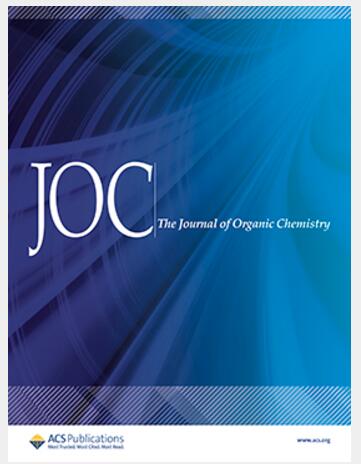以多样性为导向的硫肽抗生素路线:噻唑问题的解决方案
IF 3.6
2区 化学
Q1 CHEMISTRY, ORGANIC
引用次数: 0
摘要
古森脱羧偶联反应使噻唑-2-羧酸与 2-吡啶基三酸酯结合,从而形成吡啶-噻唑簇,这种簇存在于硫肽抗生素中。该方法避免了涉及 2-噻唑基有机金属的问题或具有技术挑战性的反应序列,有助于研究噻肽的结构-活性关系。本文章由计算机程序翻译,如有差异,请以英文原文为准。
Diversity Oriented Routes to Thiopeptide Antibiotics: A Solution to the “Thiazole Problem”
The Goossen decarboxylative coupling reaction enables the union of thiazole-2-carboxylic acids with a 2-pyridyl triflate, leading to the formation of pyridine-thiazole clusters of the kind found in thiopeptide antibiotics. The method avoids problematic or technically challenging reaction sequences involving 2-thiazolyl organometallics, facilitating the investigation of the structure–activity relationship of the thiopeptides.
求助全文
通过发布文献求助,成功后即可免费获取论文全文。
去求助
来源期刊

Journal of Organic Chemistry
化学-有机化学
CiteScore
6.20
自引率
11.10%
发文量
1467
审稿时长
2 months
期刊介绍:
Journal of Organic Chemistry welcomes original contributions of fundamental research in all branches of the theory and practice of organic chemistry. In selecting manuscripts for publication, the editors place emphasis on the quality and novelty of the work, as well as the breadth of interest to the organic chemistry community.
 求助内容:
求助内容: 应助结果提醒方式:
应助结果提醒方式:


